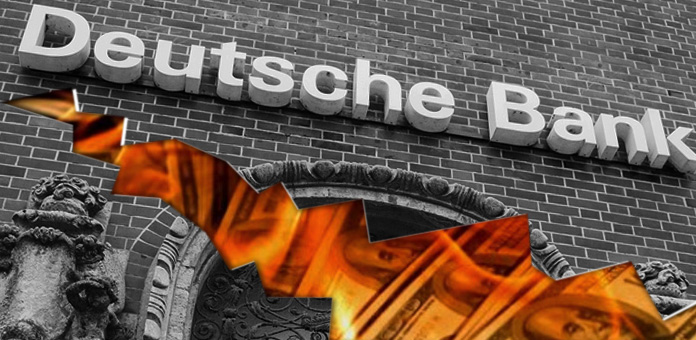
If there is any financial icon no current financial institution wants to serve as a comparative icon, it is the infamous Lehman Brothers. The subject of many case studies and review, Lehman collapsed in a September 15, 2008, $639 billion bankruptcy. 1
Because it was both a cause of and victim of the 2008 global financial meltdown, any reference to Lehman is meant to be a bellwether of pending financial doom. A recent IMF report identified Germany’s Deutsche Bank as the most immediate and significant symbol of systemic economic risk. 2 This claim quickly brought references to the Lehman collapse from financial experts, and it raised a number of pointed questions.
The Deutsche Bank Crisis
Although there has been a growing concern over the status of Deutsche Bank, the announcement took the fears out of the domain of rumors and into clearly listed black and white problems. The resulting reaction took the shares of the global bank to a 30-year low.
The steady decline of Deutsche Bank actually began in the 2009 after the effects of Lehman’s failure. As early as 2012 some insiders in the banking community alleged that billions in trading losses were hidden from regulators and shareholders.
The bad news continued for Deutsche Bank with: 3
- A crisis raise of $3 billion in 2013 to meet capital requirements
- Another crisis raise of nearly $10 billion in 2014 in two separate placements, at a stunning 30 discount to market
- Failure of a stress test in March of 2015 that included a fine of $2.5 billion for manipulating LIBOR and a drastic downgrade by S&P to BBB+, barely above its junk rating
- Reports of a loss of more than $8 billion for 2015
- More fines in June of this year for again manipulating LIBOR
This litany was capped by the IMF report that the company had failed yet another stress test in June, and that it presented systemic risk to many of its insurance and trading affiliates and partners. 4
At the core of the concern over Deutsche is the very fault that brought down Lehman: overleverage. According to Berenberg Bank, the total leverage at Deutsche is forty times its shareholders equity. Additionally, the company holds 72.8 trillion in derivatives (another Lehman error), which represents a massive 13 percent of the global market.
What if Deutsche Bank Fails?
While many are making the reference to Lehman Brothers and the mistakes it made, there is no immediate fear of its failure in 2016. However, the potential implications of such a collapse are already affecting markets, and driving even more concern over the future of the euro, especially in light of Brexit.
The Gravity of DBK
Founded in 1870, Deutsche Bank (DBK) is Germany’s largest bank, and the firm occupies a unique and important role in the country’s psyche. In fact, the idea that the bank could fail has driven much of the recent concern over Germany’s economic situation and the potential impact on global markets. 5
Germany is one of the driving forces of the EU, but it has been forced to play a losing catch-up game since 2008’s challenges. Exports are crucial to maintaining stability in Germany, much less support growth. The ongoing currency devaluations and central bank policies across the world are creating increasing concern over the potential for a near-term downturn or worse. DBK is playing a large role in driving those concerns.
Those who are turning to gold as a safe haven asset in the face of continually bad news from paper currency economies point to this as just one more of the seemingly daily “nasty surprises” about economies around the globe.
Additional Sources
2 – http://sputniknews.com/business/20160713/1042876862/us-market-review-imf-warning.html
3 – http://sputniknews.com/business/20160718/1043219466/deutsche-bank-problems.html
4 – https://next.ft.com/content/9a018afe-3e37-11e6-9f2c-36b487ebd80a
5 – https://geopoliticalfutures.com/germanys-invisible-crisis/

